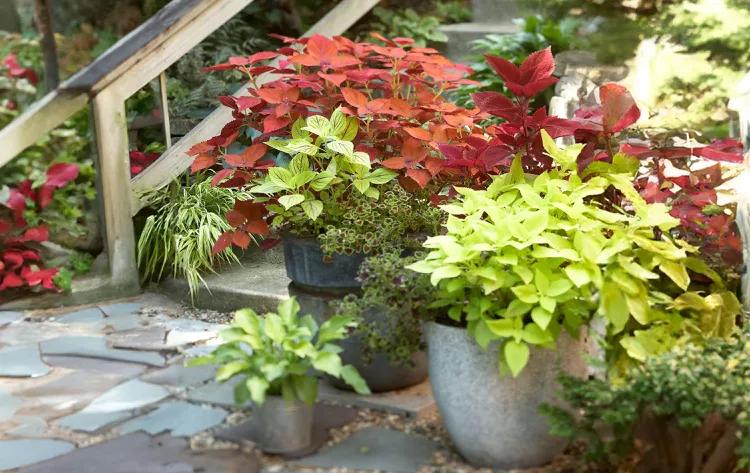When growing coleus plants for their lovely foliage in containers and garden beds, you may be wondering if they come back each year or you'll need to replace them after the winter. So is coleus a perennial?
Technically, coleus plants can live for more than one year, but most gardeners grow them as annuals that die once freezing temperatures arrive. Growing a coleus as a perennial is easy, should you wish to keep a favorite variety around. Here's what you need to know to enjoy coleus as a perennial or annual plant.
What Are Coleus Plants?
Coleus is a genus of stunning foliage plants in the mint family. While coleus plants were initially grown as shade plants, breeders have been working to make them more versatile. Many new varieties developed over the past few years are content to grow in full sunshine, even in hot climates.
Coleus varieties range in size from short 8-inch plants to 3-foot-tall giants bursting with colorful leaves. While they do flower, coleus plants are primarily grown for their foliage, which is brilliantly colored in reds, greens, purples, pinks, yellows, and whites. Breeders have been actively selecting to suppress the flowering trait because it isn’t often attractive, and it slows the growth of the much more spectacular leaves.
Is Coleus a Perennial?
You may find coleus listed as annuals in catalogs or on websites, which isn’t technically correct. While most gardeners grow them as annuals, tossing them in the compost heap at the end of the growing season, coleus is a perennial plant in the warmest climates. They’re hardy only in USDA Zones 10–11, areas that don't typically experience freezing temperatures.
As with many garden plants we think of as annuals, such as petunias and geraniums, coleus plants can’t survive frost but have a life cycle lasting more than one year. Plants like this are known as tender perennials. True annuals complete their life cycle and die in one year, even if they reseed themselves in the same spot and appear to come back the next year.
Growing Coleus as a Perennial
Coleus will survive for multiple years if conditions are right. However, exposure to frost is the end of the line for a coleus. To grow them as perennials in USDA Zones 9 and colder, you must bring them inside for the winter.
Overwinter a container-grown coleus by bringing it indoors before cold weather hits in autumn. Treat it as a houseplant, providing bright but indirect light and keeping the soil slightly moist. If you don’t have a bright enough location in your home to overwinter a coleus plant, add a grow light. You won’t need to add fertilizer during winter, but you can trim the plant back if you like.
If the coleus is too large to bring inside, take cuttings in early fall and root them indoors. Plant the rooted cuttings in pots like houseplants until spring when you can plant them outside again.
Growing Coleus as an Annual
Coleus plants are more often grown as annuals and composted in fall. Coleus can be grown from seed, but all the gorgeous new varieties available at garden centers every spring make buying starter plants the way to go. New varieties are available every year. You could fill a garden bed with coleus and never repeat a color or leaf shape.
To grow coleus as annuals, treat them as you would any other annual in you garden. Just be sure to check the tag for the variety you purchased to see if it tolerates full sun or does best in shade.
Coleus in containers.
Coleus plants are spectacular fillers for large pots in the thriller-filler-spiller planting plan and can easily hold their own in a container by themselves. Give them adequate drainage, potting mix with compost, regular water, and a little fertilizer a few times throughout the summer. They'll reward you with a lush and colorful display.
Coleus in garden beds.
Don’t be afraid to plant coleus in the ground, too. Coleus plants in garden beds bring reds, purples, whites, lime greens, and other colors to shady beds, partially shaded borders, and sunny spots. Their wide range in size means they can serve in all roles, from short border edging to tall backdrops for other plants.




















